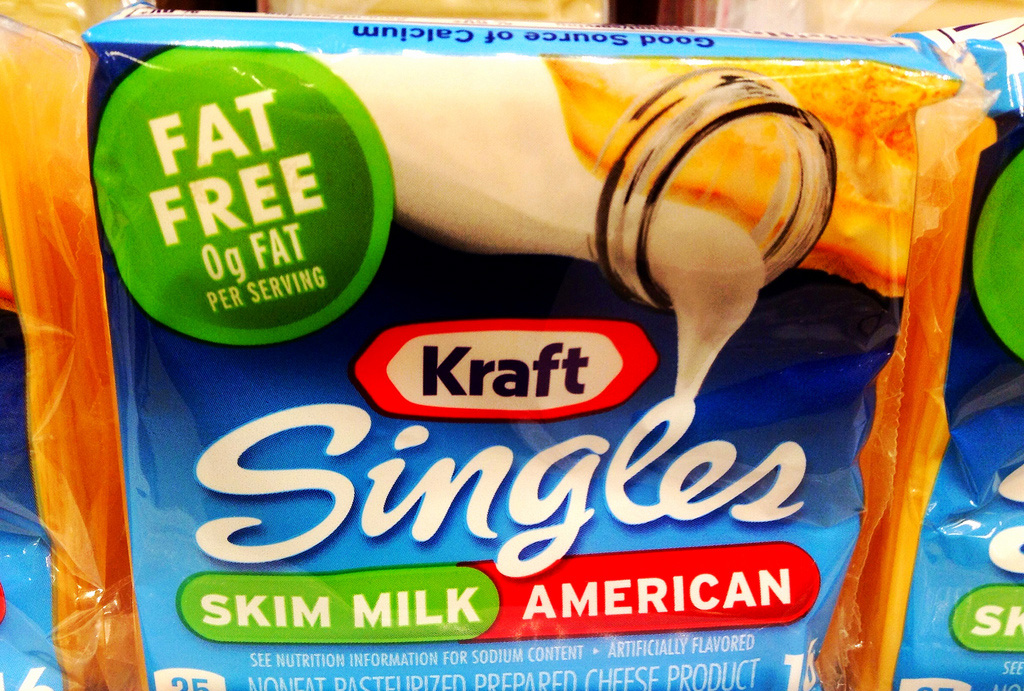The Quad: Discovering the healthy side of fatty foods

(Creative Commons photo by Mike Mozart via flickr)
By Brenda Chan
Feb. 6, 2017 7:19 p.m.
Although low-carb and gluten-free diets dominate the cultural conversation around health and wellness today, lowfat diets were once en vogue. While today we have finally been disabused of the idea all fat is unhealthy, the legacy of the low-fat era still exists today. Walking down the aisles in the Westwood Ralph’s, one can see a variety of lowfat food products such as reduced-fat Cheez-It crackers and fat-free ice cream by Arctic Zero. Bruin Plate offers lowfat milk and lowfat greek yogurt, while Covel offers nonfat French vanilla frozen yogurt.
Based on nutrition science from the 1970s and 1980s, fat became America’s nutritional bogeyman in the 1990s, blamed for causing a number of health problems. Saturated fat is said to increase the levels of low-density lipoprotein (LDL) cholesterol, which is the bad type of cholesterol. Trans fat, on the other hand, is a kind of fat that is either naturally occurring in animals or artificially produced by hydrogenated vegetable oils. Trans fat increases levels of LDL cholesterol while lowering levels of the beneficial high-density lipoprotein (HDL) cholesterol, and so was avoided by society for its damaging effects. LDL cholesterol leads to the accumulation of plaque in the arteries which in turn could result in heart disease or stroke.
Many people avoid consuming too much fat in their diets because high fat consumption has long been believed to cause weight gain and obesity. Fat contains more calories per gram than carbohydrates or protein – fat contains 9 calories per gram while carbs and protein both contain four calories per gram.
However, most of the research demonstrating that fat leads to obesity is outdated and more recent research suggests that the consumption of healthy fats can actually lead to weight loss. Good fats such as monounsaturated fats and polyunsaturated fats are beneficial in lowering LDL cholesterol. Olive oil is an example of a monounsaturated fat and nuts are examples of a polyunsaturated fat.
Due to the high caloric content of fats, food manufacturers reduce the calories and fat in food products such as milk, cheese and yogurt by producing lowfat and nonfat options to lure customers into believing that these products are healthier than their full-fat counterparts.
Many people may be under the false impression that they are being healthy by opting for products such as lowfat peanut butter and lowfat cheese, thus cutting out on the unnecessary calories. However, since fat is usually what gives food its flavor and makes it more appetizing, food manufacturers often substitute the fat with sugar, salt or artificial sweeteners in order to maintain palatability to consumers.
A recent study demonstrated that higher consumption of fat from dairy products is directly correlated to having a lower risk of developing diabetes. While research still needs to be done on exactly how the consumption of fat is linked to a lower risk of diabetes, one hypothesis is that the satiating effect of dietary fat leads to less cravings for sugar-loaded fatty foods. When people consume nonfat cheese for example, they may not be as satisfied as they would be if they were to consume the full-fat version. This causes them to crave more fatty foods which are often high in sugar and carbs.
While research demonstrates the benefits of consuming the full fat over the lowfat version, this does not mean that we should avoid all lowfat and nonfat food products. Scientific consensus always changes with time and we should not always hop on the scientific bandwagon because one day these theories may be discredited.
When consuming these foods, be it the lowfat or the full-fat version, we need to consider other factors such as portion sizes and the amount of added sugar. Reduced-fat and full-fat foods can both have a place in a healthy diet as long as they are consumed in moderation.

